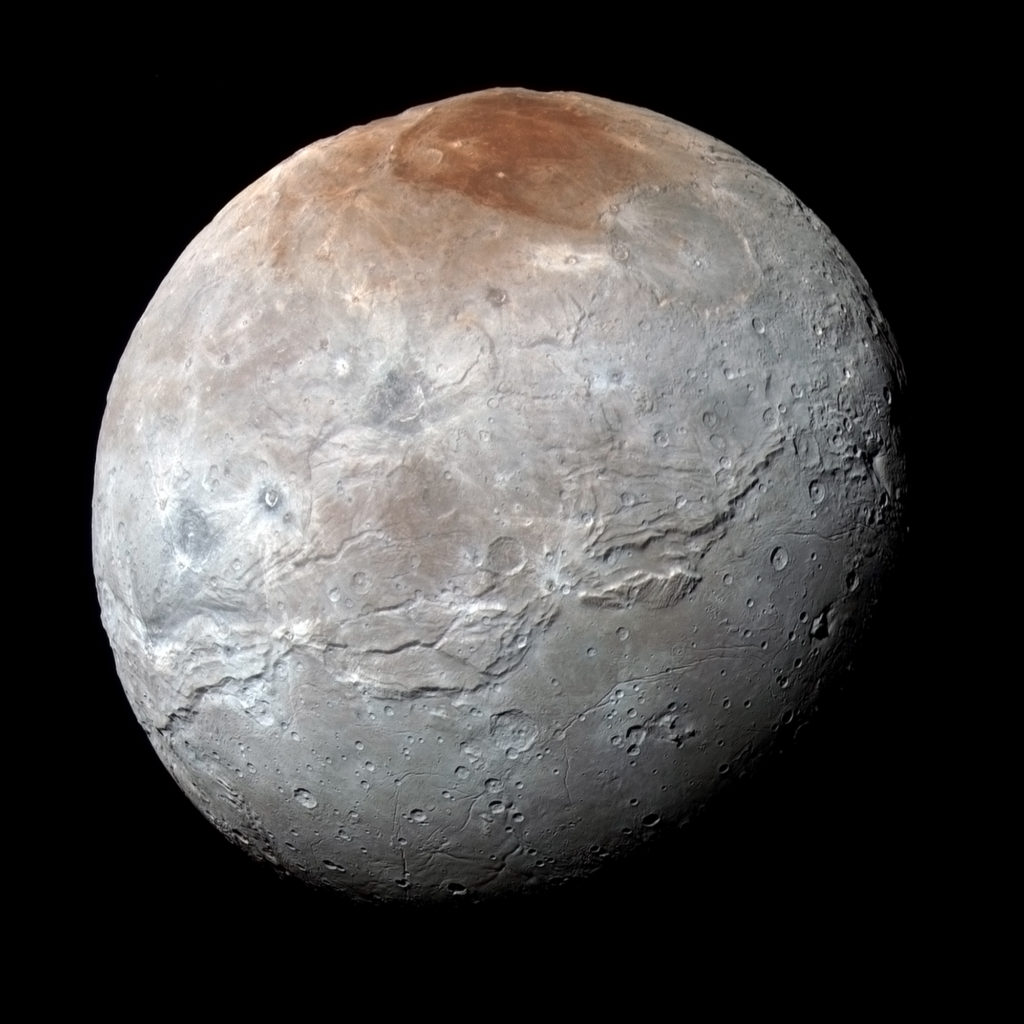
Deborah L. Davitt
In Pluto’s Embrace
Around a hidden point in space they move,
barycentric balance struck between them,
cold faces glacially surfaced in frost.
Don’t mistake their chill for lack of passion;
Earth-born lovers simply can’t comprehend
fate’s grip on this distant pair, one wrought, bound,
girdled with water-ice, while her fellow
hides his heart of stone under methane sheets.
Ice binds them—each frosty exhalation
jumps across the void for her to inhale,
keloid-like snow forms and falls on her breast
leaving scars as the sun’s distant, dim light
manipulates these gifts, presented by
not a god of life, but king of the dead.
Organic tholins knitted by the sun?
Persephone’s pomegranate chaplet.
Queen of the outer dark, her name should have
remained Persephone, but a human’s
selfish desire to immortalize
the name of his own beloved enjambed
undying Charon, boatman of the damned,
vibrant Charlene, twisting at a god’s name.
Who mourns for this pale queen, whose tears ease
xeric expanses of the void? She whose
yearning for life can transmute even death?
Zygotic, she hides in Pluto’s embrace.
Deborah L. Davitt was raised in Nevada, but currently lives in Houston, Texas with her husband and son. Her poetry has received Rhysling, Dwarf Star, and Pushcart nominations; her short fiction has appeared in Galaxy’s Edge, Intergalactic Medicine Show, and Pseudopod. For more about her work, including her Edda-Earth novels and her poetry collection, The Gates of Never, please see https://www.deborahldavitt.com/.
Editor’s Note: In this decasyllabic abcedarian poem, there’s a reference to tholins. They are a wide variety of organic compounds formed by solar ultraviolet irradiation or cosmic rays from simple carbon-containing compounds such as carbon dioxide, methane or ethane, often in combination with nitrogen or water. Tholins are disordered polymer-like materials made of repeating chains of linked subunits and complex combinations of functional groups. Tholins do not form naturally on modern-day Earth, but they are found in great abundance on the surfaces of icy bodies in the outer. (en.wikipedia.org/wiki/Tholin)
The image, an Astronomy Picture of the Day (APOD) on July 6, 2018, is credited to NASA, Johns Hopkins University Applied Physics Laboratory, Southwest Research Institute, and the U.S. Naval Observatory. Their explanation: “A darkened and mysterious north polar region known to some as Mordor Macula caps this premier high-resolution view. The portrait of Charon, Pluto’s largest moon, was captured by New Horizons near the spacecraft’s closest approach on July 14, 2015. The combined blue, red, and infrared data was processed to enhance colors and follow variations in Charon’s surface properties with a resolution of about 2.9 kilometers (1.8 miles). A stunning image of Charon’s Pluto-facing hemisphere, it also features a clear view of an apparently moon-girdling belt of fractures and canyons that seems to separate smooth southern plains from varied northern terrain. Charon is 1,214 kilometers (754 miles) across. That’s about 1/10th the size of planet Earth but a whopping 1/2 the diameter of Pluto itself, and makes it the largest satellite relative to its parent body in the Solar System.”

Love it!